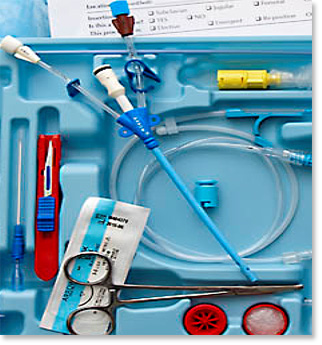| First Section Page | Page 1 of 3 | Last Section Page |
OBJECTIVES:
- Discuss Indications for Device
- Review Contraindications that Alter Device Selection
- Review of Patient Risk Factors


Because vascular access for infusion therapy is the most common invasive experience of all hospitalized patients, the emphasis on vessel health and preservation is of utmost importance. Timely planning for vascular access affords each patient the basic right to minimized risk and maximized optimal outcomes in the short and long term.
Reducing risk and unnecessary harm in the hospital environment begins with assessment of the patient's condition, history and relative vessel health. Matching the patient's current state of health with the need for intravenous access prevents unnecessary IV restarts, reduces medication delays and provides for optimal outcomes. The recommendations presented here are from the Joint Commission (TJC), National Patient Safety Goals (NPSG) and The Society for Healthcare Epidemiology of America (SHEA) strategies.